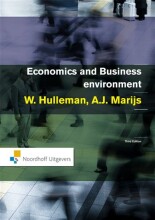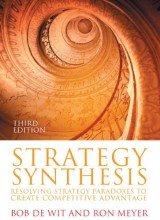Introduction to Change management
43 important questions on Introduction to Change management
What does 'Unconscious Incompetence' mean in the Lewis Hange Model?
What is the second stage in the Lewis Hange Model?
What does 'Conscious Incompetence' mean in the Lewis Hange Model?
- Higher grades + faster learning
- Never study anything twice
- 100% sure, 100% understanding
What is the third stage in the Lewis Hange Model?
What does 'Conscious Competence' mean in the Lewis Hange Model?
What is the fourth stage in the Lewis Hange Model?
What does 'Unconscious Competence' mean in the Lewis Hange Model?
How can the Lewis Hange Model be useful for students?
What is the importance of recognizing the different stages in the Lewis Hange Model?
How can students move from one stage to another in the Lewis Hange Model?
Can individuals regress to previous stages in the Lewis Hange Model?
Is the Lewis Hange Model applicable to all types of learning?
Are the stages in the Lewis Hange Model linear and progressive?
How can teachers or instructors use the Lewis Hange Model in their teaching practices?
Can the Lewis Hange Model be applied to self-directed learning?
What is the prevailing view in organisational change literature about resistance?
defined as "Active of passive responses on the part of a person or group that militate against a particular change, a program of changes, or change in general."and;
That it is considered by many as the main reason for the failure of so many change effort.
What are some strategies that students can use to progress through the stages in the Lewis Hange Model?
How do we cope with resistance?
What(two things) is wrong about the view of resistance also considering shareholders?
2: That resistance arrises from within the individual.
because the view assumes that those who initiate and manage change are neutral parties who are acting in the best interest of the organisation and its stakeholders. However, as noted in the earlier discussion of effectiveness, organisations have many stakeholders, and it it unwise to assume that they all share the same interests. Nor should we assume that the managers who initiate changer are necessarily pursuing the organisations' best interests
Who developed the Lewis Hange Model?
How can resistance be constructive and considered good in the change proces?
"Resistance keeps people in organizations from attaching themselves to every boneheaded idea that comes down the pike"
You can also argue that resistance is valuable passion that can become a constructive form for organisational renewal.
Does resistance arrises from the individual? Explain.
What is the dilemma of resistance ?
On the other hand, there is equally strong evidence that resistance does arise from a individual's psychological make-up.
however, the individual and systemic views of resistance need not be seen as contradictory. This view supports interplay between the individual and the system de person operates in.
Which 4 theories are named as proof for interplay ?
2. The dept of intervention
3. The psychological contract
4. Dispositional resistance
Explain the cognitive dissonance theory?
In order to reduce the severe stress that high levels of dissonance can occasion , individuals, will seek to re-establish a balance between their attitudes and behavior by changing the strength of the driving or restraining forces. i.e. resisting.
Explain the theory of Dispositional resistance?
the founders of this theory ( OREG) created a resistance towards Change (RTC) Scale to measure 'an individuals tendency to resist or avoid making changes.
Identified in personalty factors: Routine-seeking, emotional reaction to imposed change, cognitive rigidity, and short-term focus.
Dispositional resistance is moderated by contextual factors, such as the role of the change agent and the way in which they manage the change process.
Resistance to change is not uniform among human beings. Instead...?
An individual's level of dispositional resistance does not necessarily predict their actual level of resistance to any particular change initiative, instead.....?
What happens to change initiative that do not evaluate the readiness?
Factors include effective leadership, a good relationship between managers and employees, organisational commitment, a positive communication climate, a coherent change strategy that is alligned with the organisations cultural values and communicated to and debated with those involved.
Explain the concept of change agent by Kurt Lewin? (Lewin-OD)
The Lewin-OD sees change agent as playing a mainly neutral-facilitating role and working with a transparent ethical agenda to help those involved to identify the options and make their own choices. Trust and choice are crucial in creating the environment for change.
Change agent and readiness?
The organizational readiness needs to be assest at the macro, meso and mirco levels. Factors such as: Well-supported strategy plans, environment of trust, favourable group norms, and training programs and appraisal procedures which promotes flexibility among staff can help the readiness of change.
How does a change agent assesses the readiness of an organization?
Seeking and identifing factors at the individual, group and organisational levels which will either hinder or promote change, such as sensitivity to pressure for change, dissatisfaction with the status quo, the degree of trust and shared believes between employees and managers, and the availibilty of resources necessary to support change.
This includes the knowledge, skills and availability of substantial management time.
The modern Change agent is more like ?
newer perspectives on the role of the change agent see change as an open-ended, complex, continuous and political process, and a normal part of everyday life in organisations. Consequently , it must be seen as an increasingly important part of every managers role rather then a specialist activity driven by an expert.
What do the few studies about change agents effectiveness show?
Buchanan and boddy suggests a model of the expertise of the change agent which skills and competence?
Diagnostical skills:
- The ability to categorise the nature of the organisation on a spectrum of rigid to organic, and to determine whether and where it is moving along this scale and how this will impact the nature of the change initiative.
- Understanding of critical events in the organisation in the past and how these will affect expectations of and attitudes towards change.
15 competence : Five clusters : Goals, Roles, Communication, Negotiation and Managing up
What is the Theory of Weick and Quinn about language?
these change agent bring around change through a combination of five forms of language or speech acts:
- Assertives or claims,
- directives or requests,
- commisives or promises,
- expressive that convey affective states;
- and declarations that announce a new operational reality .
The change agent as an active manager of the change process with their own agenda, which they seek to promote or impose bu managing and shaping the perceptions of those concerned.
What do Buchanan and Boddy mean with creative abilitiy of the change agent?
Expertise does not simply involve the mechanical deployment of diagnostic tools, competences and stereotyped solutions, but involves also the innovative and opportunistic exploitation of other dimensions of the organizational context.
What is the theory of Lichtenstein concerning change agents?
Schuyt en Schuijt theory ?
Three models of change?
2. The punctuated equilibrium model of organisational transformation
3. The continuous transformation model of change
Explain the incremental model of change?
Change will take place through successive, limited and negotiated shifts.
western companies can benefit from incremental as it avoids stagnation and brutality associated with rapid corporate transformation.
Explain punctuated equilibrium model of organisational transformation?
Explain the continuous improvement transformation?
The question on the page originate from the summary of the following study material:
- A unique study and practice tool
- Never study anything twice again
- Get the grades you hope for
- 100% sure, 100% understanding
































